Want to see the latest and greatest in hot new fishing gear? This October we had our hands full, with a wide variety of goodies including fishing rods, reels, lines, and even a bucket. Er, yes - a bucket. Check it out and if you're an angler, we're betting you'll see a bunch of tackle, tools, and tidbits worthy of your desire.
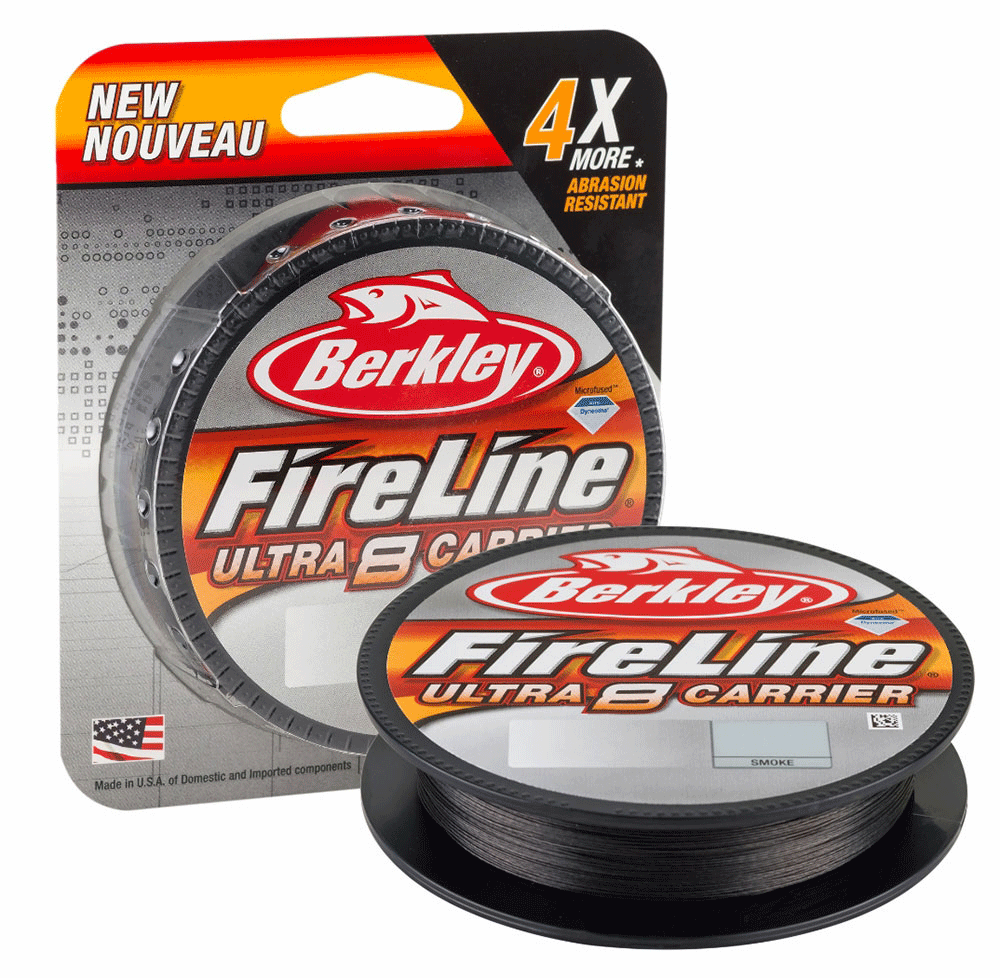
Berkley Fireline Ultra 8
If you remember when Berkley Fireline first hit the market, they you'll probably recall it was one of the first popularize braid. The thin diameter, zero-stretch properties, and slick character of this line made it ideal for many forms of fishing, and now, Berkley has a new version of Fireline to consider: Ultra 8. How is it different from the older-generation Fireline? Braid's one real weakness when compared to monofilament is a lack of abrasion resistance. And Berkley says Ultra 8 has four times greater resistance to abrasion. While we can't vouch for that until we’ve used it for a season or two, we can share a few other details. The line does have a slick, smooth feel, and it does fly more smoothly through the guides than some other braids. You still need to use a Palomar, and never a fisherman's knot, with this stuff. And the pricing is still pretty steep as compared to monofilament, coming in at around $20 for a 125-yard spool, $40 for 300 yards, and $199 for a bulk spool of 1500 yards. For more info check out berkley-fishing.com, or watch our video preview:
Cooler Insert
If you’ve ever dropped a freezer-pack into your cooler full of crabs to keep them chilled on a sunny summer day, you’ve surely discovered blue goo all over the place within a matter of seconds. Say what you will about the Chesapeake’s most famous crustacean, one thing is for sure: it will put the term “puncture-resistant” to the test. So when the folks at Cooler Insert said they wanted us to test and review their ice-replacing cooler insert, we decided to bait the trot-line and see just how tough it is.
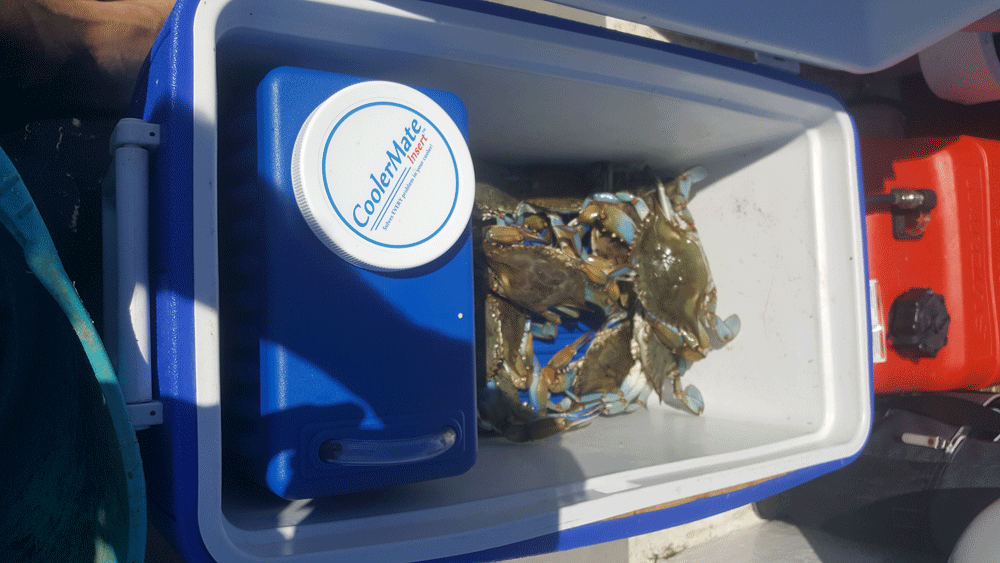
The Cooler Insert is a molded plastic insert made to be filled and frozen (or filled with ice water) and then placed in your cooler instead of ice. The design creates convection, circulating ice-cold air around the cooler’s contents without the usual melt-off issues of ice, like getting your food wet and having to dig through ice-water to find a frosty can. We see the biggest value here in chilling down a food cooler, without the usual soggy bread and floating fried-chicken.
But, what happened when we loaded the cooler with jimmies instead of junk-food? The Cooler Insert proved itself, passing the pincer-test without so much as a scratch. Yes people, we realize fall is here and keeping things chilled is not really a huge issue at this point. But we didn’t want to give the Cooler Insert a thumbs-up until it proved itself claw-proof, so please forgive our timing. If you’re sick and tired of waterlogged sandwiches, this one’s a winner any time of the year. Price: $44.95. For more information, visit coolerinsert.com.
Cuda Telescoping Net
Here at FishTalk we love to bring you the scoop, and that’s easy with the Cuda Brand telescoping net. Now, before you condemn us for making one bad pun, let us assure you that there really is a newsworthy story here to be told. These nets have quite a few unusual characteristics, including a “keeper” that holds the mesh down so it doesn’t blow around when you’re running from hotspot to hotspot; a silicon coating on the mesh so it won’t injure the fish; a Kevlar rim; and a zip-off mesh that can be replaced in case it gets ripped. What really surprised us, however, is that getting this net means landing a real bargain because the trophy-sized 38- by 26-inch version lists at just $99. Don’t throw those rotten tomatoes just yet, folks, because like they say on TV, wait—there’s more! Lettuce turnip your enthusiasm by mentioning that there are four different sizes available. Okay, we’re sorry—but it cuda been worse. For more information visit cudabrand.com, or watch our video preview.
Formula X2
Full disclosure: Formula X2 is a FishTalk advertiser, and has been since our first edition came out back in April. That’s why, when we discussed writing about them editorially, we insisted that before a single word went into print we had time to try this stuff out. And we decided to test X2 in two ways: first by running it through a 25-horse outboard for the season, and second, by performing a chemical test for water in the fuel after treating it with X2. And yes, we even captured it on film:
Formula X2 is a fuel additive use to combat the affects of ethanol, improve lubrication, and keep your engine’s fuel system clean. It’s an emulsifier which doesn’t contain alcohol and doesn’t just break water up (like some fuel additives), but mixes with it in a cold-chemical reaction. It fractures the bonds between the hydrogen and oxygen molecules in the water, the hydrogen naturally bind with the fuel itself, and the oxygen is released into the atmosphere. At least, that’s what the folks at X2 told us. So, what else did we find out?
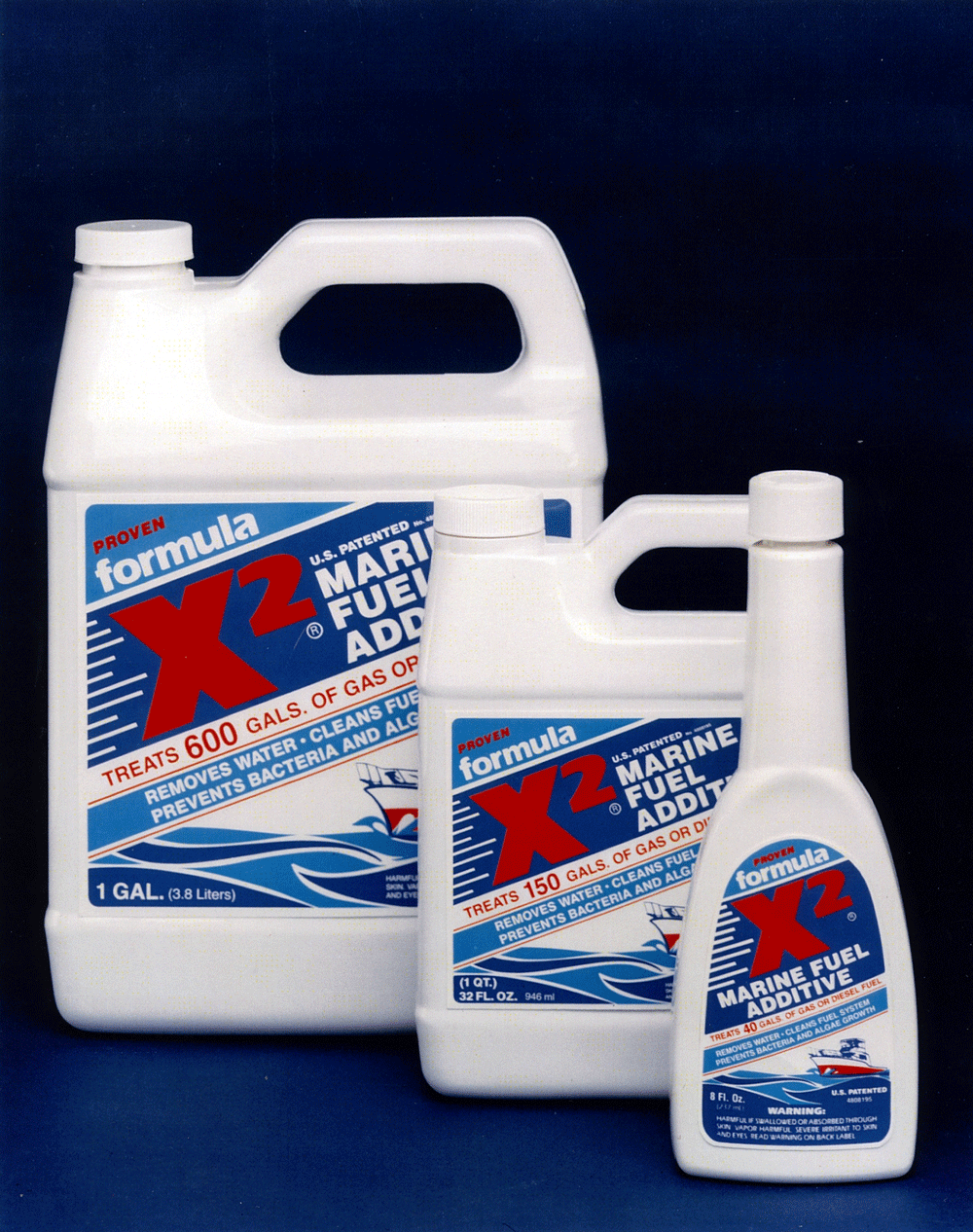
First off, the outboard running X2-treated fuel never skipped a beat all summer long. The tank was filled with E-10 gas from a local station, and got a dose of X2 on fill-ups. So far, so good. Then for the chemical test, well, you saw what happened there. The bottom line? If water in your fuel has been a problem, Formula X2 appears to be a solution—and we now know from first-hand experience that running it through your outboard keeps things smooth and water-free. An eight-ounce bottle goes for $15.95; for more info check out formulax2.com.
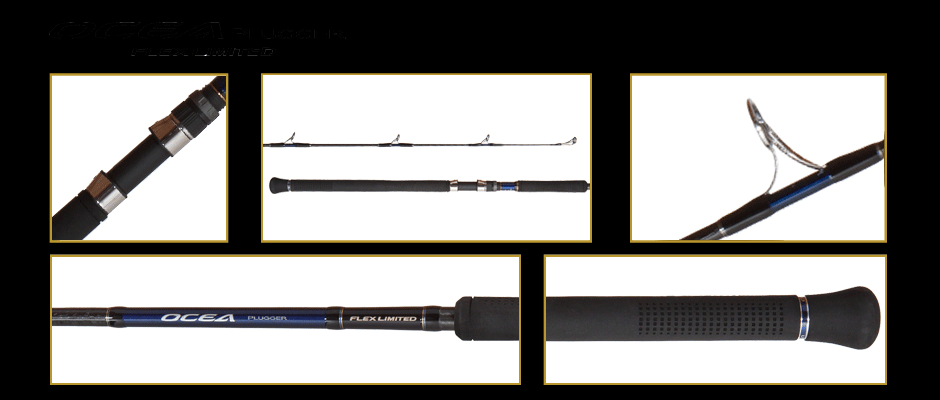
Shimano OCEA Plugger Rods
We’re giving the OCEA a half-button because we did get to handle the rods and get a feel for them, but since we were in a convention center (at the ICAST fishing tackle trade show) we couldn’t actually fish with them. These are big, potent rods, available in eight-foot two-inch, eight-foot three-inch, and eight-foot eight-inch models in medium-heavy and heavy power. Blanks include Shimano’s Spiral X blank construction, which consists of a blank with vertical fibers and inner and outer layers of carbon tape wound diagonally in opposite directions. (Read: uber-strong). On top of that they also have the Hi-Power X build, with an outermost layer diagonally wrapped with carbon tape to create a series of X’s running along the blank. (Read: uber-stronger). The OCEA Pluggers are designed to go with Stella SW and Twin Power SW 10000 to 20000 size spinning reels. In case these sound like massive armaments, well, they are—the intent is to properly equip you for throwing monster plugs and topwater lures to the biggest and most vicious pelagics. If you want to cast bowling pins for bluefin, you just found your next weapon. For more info, visit fish.shimano.com.
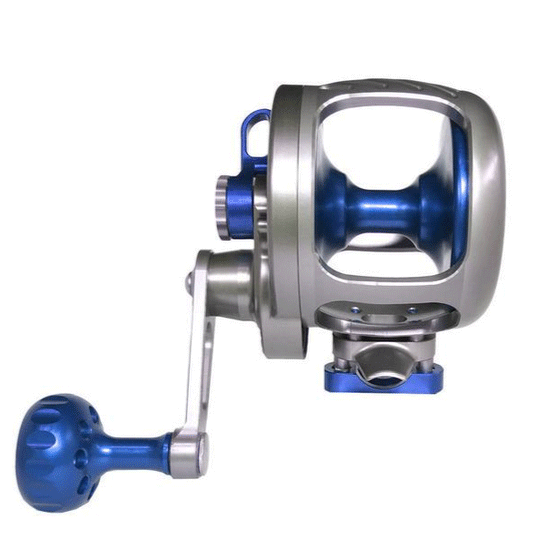
Seigler Reels
We spotted Seigler Reels at the 2017 ICAST fishing tackle trade show, and immediately liked them. Why? Number one, Siegler offers a lifetime (lifetime!) warranty on all their reels. Number two, even with the lifetime warranty, they aren't ridiculously expensive. Number three, they're manufactured locally in Burgess, VA. That's near Smith Point, just over the Maryland/Virginia line, for you folks who live... pretty much anywhere except Burgess, VA.
Wait a sec—we forgot to mention another reason why we liked 'em: the guys making these reels clearly have a sense of humor. Go to the web site, click on the "Where it's Made" tab, and you get a message saying "NOT IN CHINA That is the damn truth!!" LUV IT!
Back to the important stuff: they make mostly conventional reels, both lever and star drags, plus a couple of fly reels, crafted from machined-aluminum and stainless-steel. The latest intro is a fly reel—Wes Seigler is an avowed fly fisherman–and rumor has it that a spinning reel is in the works. So, just how much do these reels cost, considering that they're made in America, out of actual metal, by a small company, and carry a lifetime warranty? The Seigler OS lever drag, to use as an example, holds 725 yards of 80 pound braid and weighs 25.8 ounces, has multiple drag lever detents, and has a gear ratio of 5.2:1. The price tag is $500, which seems more than reasonable considering all of the above factors. We should note that these reels have relatively simple designs, eschewing things some other manufacturers tout like multiple speeds with quick-shift mechanisms and dual drags. Then again, the more complex a reel is the more prone it is to potential failure, and none of the others come with lifetime warranties. So while these may not the top pick for tech-heads, those of us who want a reel that works all the time might be willing to sacrifice a few bells and whistles. For more information visit seigler.fish, or check out our video preview:
Yeti Loadout Bucket
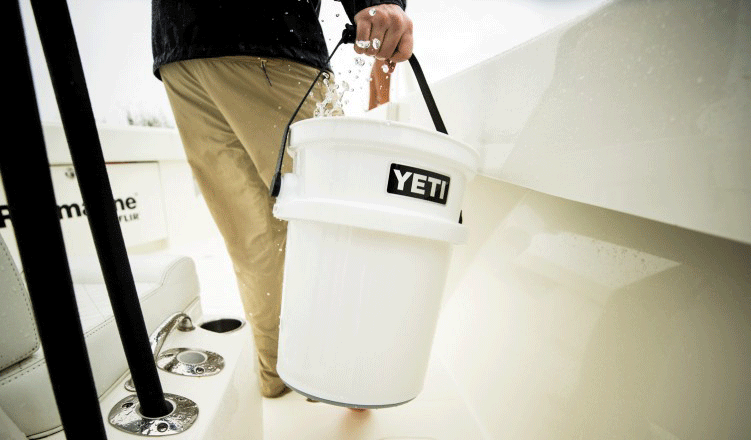
If you always buy nuclear worms instead of bloodworms, your spinning reels are all Stellas, and your center console has quad outboards on the transom, we’ve got the perfect bucket for you: the new Yeti LoadOut. With the injection-molded LoadOut not only will you get to pay $40 for a five-gallon bucket (WOOHOO!) you’ll also be getting a palatial pail that has not one but two handles—a “Heftyhauler” handle swinging at the top and a molded in “Lipgrip” handle around the midsection—tie-down slots, and a non-slip ring around the bottom. Yes, we do think it’s a bit nutty to lay out this kind of cash for a five-gallon bucket when the Home Depot version is a whopping $2.97. Then again, who thought half the country would lay out $350 for a 26-can cooler? Trade in your Corvette and buy a LoadOut Bucket today, or visit yeti.com for more info.